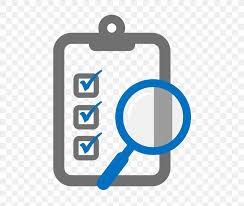15 Strategies for Optimizing the Customer Journey and Sales Funnel
In today's dynamic marketplace, constructing a robust customer journey and a high-performing sales funnel is paramount for sustained competitive advantage. This necessitates a deep understanding of key concepts. A customer journey map visually represents the customer's interaction with a brand, encompassing all touchpoints from initial awareness to post-purchase engagement. A sales funnel, conversely, models the stages a prospective customer progresses through, from initial lead generation to final conversion. This article elucidates fifteen strategic approaches to architecting a seamless and personalized customer experience, culminating in improved conversion rates and enhanced customer lifetime value (CLTV).
1. Comprehensive Customer Segmentation and Profiling: Before embarking on any marketing initiative, a thorough understanding of the target audience is critical. Employing market research methodologies, such as surveys and focus groups, alongside data analytics to segment the customer base based on demographics, psychographics, and buying behavior is essential. This allows for the development of highly targeted marketing campaigns leveraging principles of behavioral economics and consumer psychology. This segmentation informs the creation of buyer personas, detailed representations of ideal customers which guide marketing and product development decisions.
2. Strategic Customer Journey Mapping: A meticulously crafted customer journey map serves as a blueprint for the entire customer experience. This map visually outlines each touchpoint, detailing the customer's interactions with the brand at each stage—from initial awareness (e.g., through social media or search engine marketing) to consideration, purchase, and post-purchase engagement. This approach facilitates the identification of pain points and opportunities for optimization, enhancing user experience through the lens of user-centered design principles.
3. Content Marketing Strategy Development and Execution: The creation of high-quality, relevant, and engaging content is crucial for attracting and nurturing potential customers. This encompasses various formats—blog posts, videos, infographics, and social media updates—all designed to resonate with the target audience's needs and preferences. The foundation of a successful content strategy is keyword research and search engine optimization (SEO) to improve visibility and organic reach.
4. Personalized Marketing and Lead Nurturing: Utilizing data analytics and CRM systems, businesses can personalize marketing messages and offers based on individual customer behavior and preferences. This targeted approach maximizes engagement and conversion rates. Lead nurturing, a systematic process of engaging with prospects over time, utilizes automated email sequences and personalized content to guide potential customers through the sales funnel.
5. Landing Page Optimization for Conversions: Landing pages are critical touchpoints in the customer journey. Optimizing these pages—through A/B testing different headlines, calls to action (CTAs), and visuals—is essential for maximizing conversion rates. This involves implementing conversion rate optimization (CRO) best practices to improve user experience and encourage desired actions.
6. Leveraging Social Proof for Trust Building: Testimonials, reviews, and case studies provide powerful social proof, building trust and credibility with potential customers. Integrating these elements strategically throughout the customer journey significantly influences purchasing decisions, leveraging principles of social influence and conformity.
7. Marketing Automation for Efficiency and Scalability: Marketing automation tools streamline and automate repetitive tasks—email campaigns, lead nurturing, and follow-ups—enhancing efficiency and scalability. This allows marketers to focus on strategic initiatives while ensuring consistent engagement with prospects and customers.
8. Exceptional Customer Service and Support: Providing prompt, personalized, and exceptional customer support across various channels—email, chat, phone—is vital for building customer loyalty and advocacy. Proactive support and effective issue resolution demonstrate a commitment to customer satisfaction.
9. Strategic Incentive Programs to Drive Conversions: Offering incentives—discounts, free trials, bundled offers—can significantly impact customer behavior, motivating them to progress through the sales funnel. These strategies leverage principles of behavioral economics, particularly the concept of loss aversion.
10. Retargeting Campaigns for Re-engagement: Retargeting strategies, using personalized ads or email campaigns, re-engage customers who have previously shown interest but did not convert. This approach ensures that potential customers remain within the marketing funnel.
11. Streamlined Checkout Processes to Minimize Cart Abandonment: A frictionless and user-friendly checkout process is crucial for minimizing cart abandonment. Optimizing the checkout experience, minimizing the number of steps, and offering multiple payment options contribute significantly to increased conversion rates.
12. Upselling and Cross-selling Strategies: Identifying opportunities to upsell (higher-priced products) and cross-sell (related products) increases average order value (AOV) and customer lifetime value (CLTV). This requires a deep understanding of customer needs and product offerings.
13. Data-driven Analysis and Performance Monitoring: Continuous monitoring and analysis of key performance indicators (KPIs)—conversion rates, customer acquisition cost (CAC), CLTV—provide valuable insights into the effectiveness of the customer journey and sales funnel. This data-driven approach informs necessary adjustments and optimizations.
14. A/B Testing for Continuous Improvement: A/B testing different elements—headlines, visuals, CTAs—allows for the identification of the most effective strategies. This iterative approach to optimization ensures that the customer journey and sales funnel are constantly refined.
15. Gathering and Utilizing Customer Feedback: Actively soliciting customer feedback through surveys, feedback forms, and social listening provides valuable insights into customer experiences. This feedback loop informs necessary improvements and ensures a customer-centric approach.
Conclusions and Recommendations
Constructing a high-converting customer journey and sales funnel requires a multifaceted, data-driven approach. By strategically implementing these fifteen strategies, businesses can significantly improve their conversion rates, enhance customer satisfaction, and ultimately boost profitability. Regularly analyzing performance data and adapting strategies based on evolving customer behavior and technological advancements are crucial for sustaining success. Future research could focus on the application of artificial intelligence (AI) and machine learning (ML) to further personalize the customer experience and optimize the sales funnel in real-time. The integration of predictive analytics can enhance targeting and forecasting, leading to more efficient resource allocation and improved marketing ROI.
Reader Pool: How might the application of predictive modeling further enhance the effectiveness of the strategies outlined in this article for improving customer journey mapping and sales funnel optimization?






No comments yet. Be the first to share your thoughts!